Can you tell us briefly about your role at Denali, including your biggest achievements?
I am a Senior Director of Environmental Services for Denali, providing regulatory, environmental, and technical oversight for the land application of organic and inorganic residuals for industrial and municipal clients in the Southeast.
Before joining Denali in 2014, I worked for a biosolids management company for seven years, providing similar services. I am proud that my work has benefited soil health and rural communities on thousands of acres across the Southeast US.
What is mine reclamation, and why is it important?
At Denali, we see mine reclamation as healing the damage done to the land by mineral extraction.
Mine reclamation is an opportunity to transform an ecological tragedy into an asset for local communities, wildlife, vegetation, and beyond.
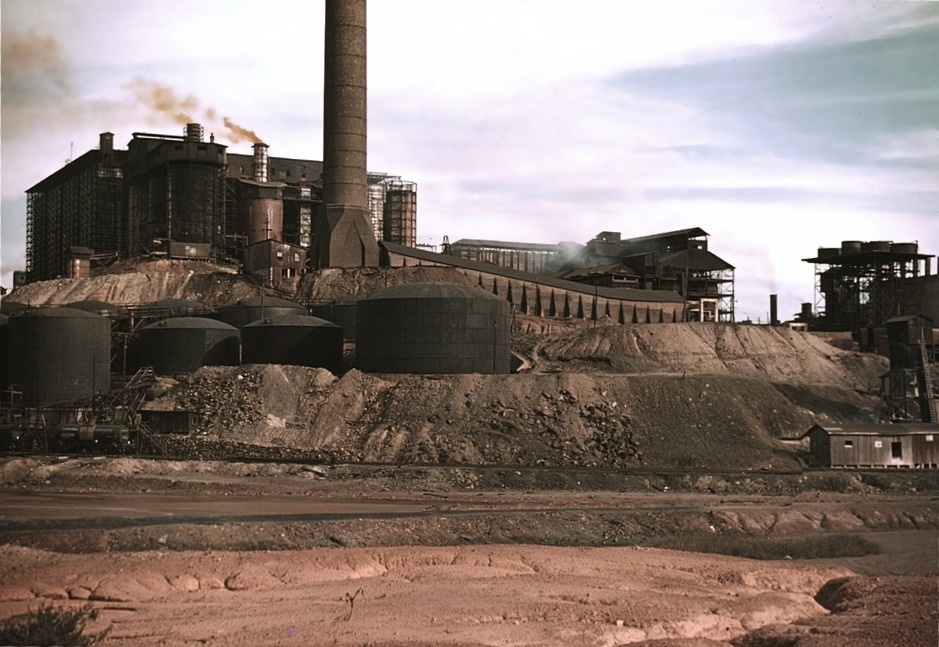
The Copperhill mine and sulfuric acid factory in 1939. Image Credit: The Library of Congress
Mine reclamation is crucial because often the land is left barren, without topsoil, and acidic due to mining activities – posing risks to waterways and, potentially, communities.
Reclaiming mine sites with biosolids enables communities and municipalities to restore the land and transform it into a thriving ecosystem with wildlife, revegetation, and healthier water.
Each time we begin a mine reclamation project, we aim to restore ecosystem function and economic value to sites in self-sustaining ways. We focus on being able to walk away from a project knowing that we have provided a durable solution that will withstand the test of time.
Denali has recently partnered with Copperhill Industries to restore the Copperhill Mine Basin. Can you explain what this has entailed, from start to finish?
In 2016, The U.S. EPA and the Tennessee Department of Environment and Conservation (TDEC) partnered with Copperhill Industries to begin mine reclamation efforts at the site with traditional fertilizers and lime. Revegetation using conventional methods was not working, and the agencies recognized that success would require a non-traditional approach.
Copperhill Industries, the EPA, and TDEC engaged Denali to deliver lime-stabilized biosolids, a proven and carefully controlled, organic-rich soil amendment that can help correct soil pH and build topsoil — the two things the Copperhill site needed to support vegetation.
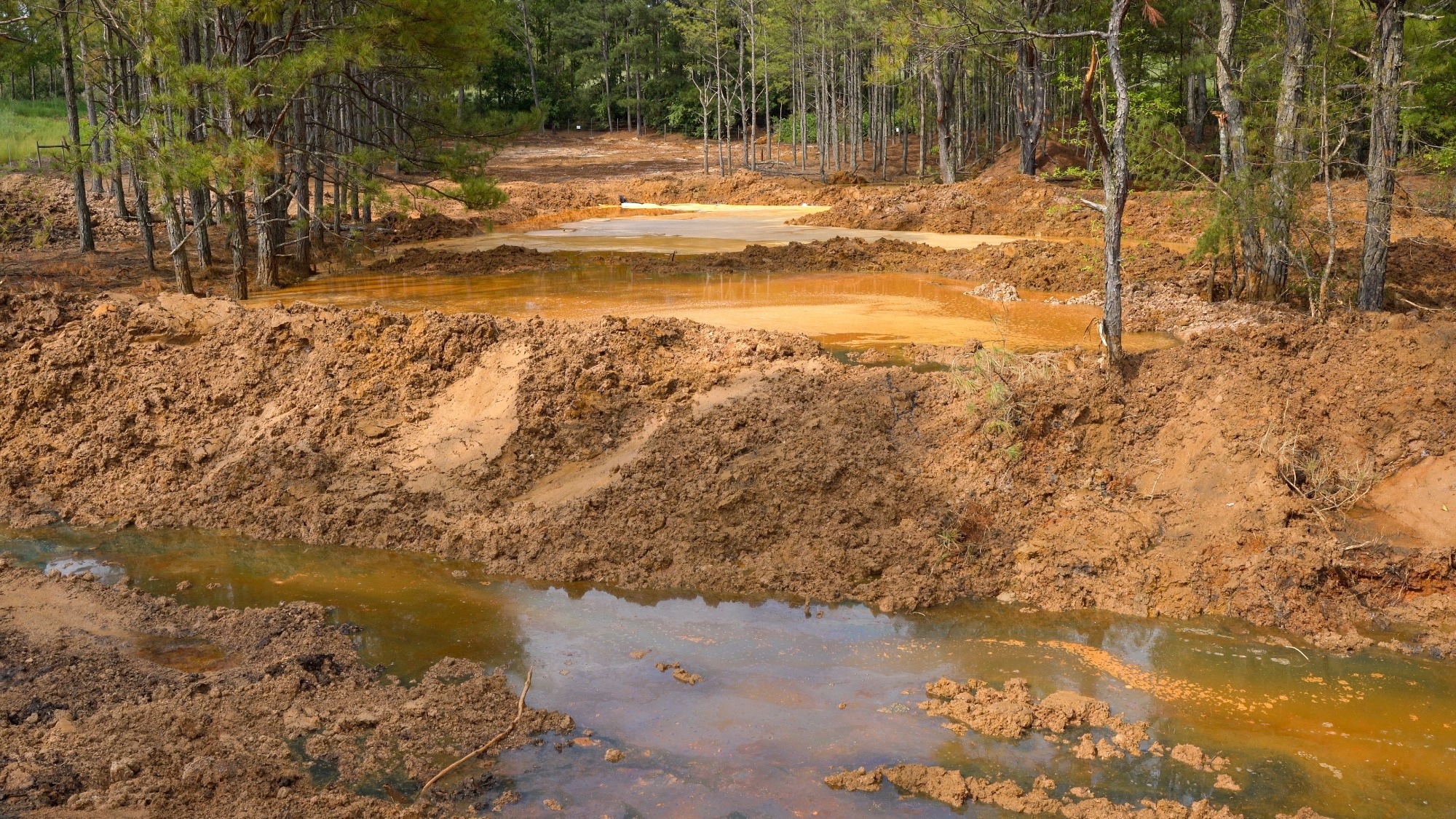
Davis Mill Creek runs through the Copperhill mine site, picking up acid mine drainage before entering a water treatment plant and the Ocoee River. Image Credit: Denali
In 2018, Denali began delivering lime-stabilized biosolids to Copperhill Industries and quickly saw success with revegetation, wildlife, and enhanced water quality. Operations were paused in late 2022 due to odor concerns.
Denali sourced biosolids from a new location to address odor concerns, enhanced its on-site treatment processes, and restarted its application this year. This change has significantly reduced the potential for odor.
Denali’s work with Copperhill Industries has evolved from addressing some of the most denuded areas to targeting locations most impacted by acid mine drainage.
All water draining through the site is run through a water treatment plant to remove metals and correct pH before discharge into the adjacent Ocoee River. We still have work to do, but we are hopeful that our use of biosolids can remediate the site to the point that this water treatment plant is no longer needed.
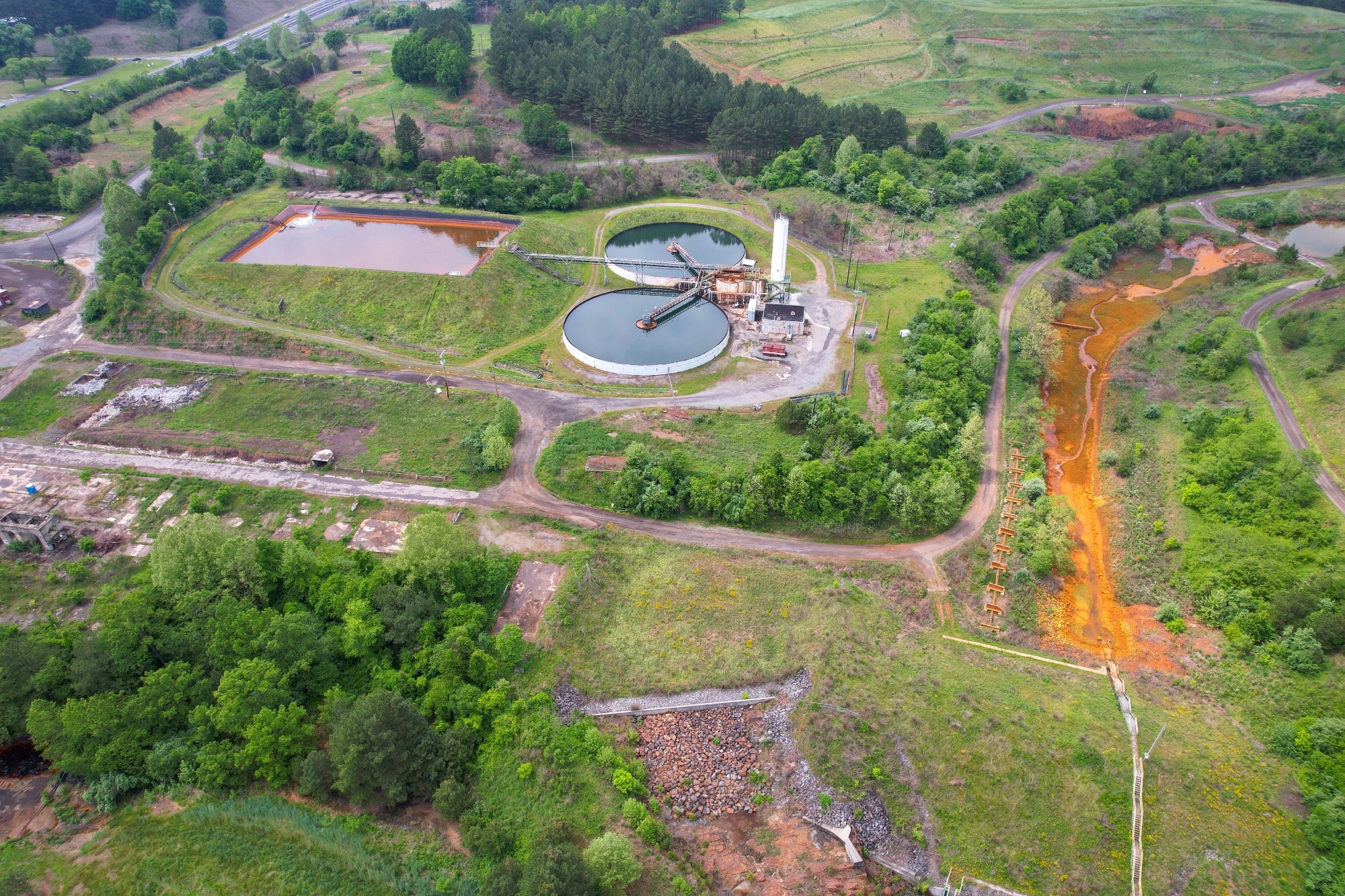
The orange water of Davis Mill Creek, right, is diverted from its channel and to a water treatment plant, left, that corrects the pH and removes pollutants. Denali, land owner Copperhill Industries, the Tennessee Department of Environment and Conservation, and the U.S. EPA are hopeful that reclamation with biosolids will end the need for the water treatment plant. Image Credit: Denali
How did you ensure the mine reclamation was environmentally sustainable and complied with regulations?
Denali continues to work closely with state and federal regulators to ensure the Copperhill mine reclamation project complies with all regulations. Denali goes beyond required regulations by using the highest quality biosolids possible under the U.S. EPA’s Part 503 rules.
For example, the biosolids we apply at Copperhill are such high quality (i.e., Class A Exceptional Quality) that we could be exempt from many U.S. EPA and TDEC protocols associated with slightly less processed biosolids. We continue to operate under those protocols because the U.S. EPA Superfund and the State of Tennessee are key stakeholders and partners.
Looking at the last five years of reclamation efforts at Copperhill, we can see lasting improvements in soil quality, water, and vegetation from biosolids that will continue to support wildlife, revegetation, and cleaner water in the coming years, offering a sustainable solution for the site’s ecosystem.
What strategies or technologies did you employ to minimize soil erosion and monitor and control water pollution during the mine reclamation?
Mine reclamation requires a careful balance of the right strategy and the right timeline. Prior to biosolids application, many areas lacked topsoil, so water infiltration was minimal, and rainfall quickly flashed through sites carrying acidic, contaminated sediment. To minimize erosion, Copperhill Industries has done great work terracing and ripping the ground to ensure the biosolids stay put and incised channels do not form.
At Copperhill, pH has been a critical indicator of our success due to acid mine drainage and past sulfuric acid production on the site. Thanks to biosolids and revegetation, some surface waters that previously had a pH of 2.0 now have readings of 5.0 or higher. Wildlife returning to the site has also been a key indicator of success. Today, ducks and geese live at the Copperhill mine site and nest near its ponds and streams. We have much work yet to do, but Denali is thrilled with the soil and water quality improvements.
What have you and the company learned from the Copperhill Mine Basin reclamation?
The logistical and regulatory hurdles required with biosolid application are complex, but the outcome – benefits to the land, ecosystem, and communities – shows the importance of reclamation efforts.
Denali manages biosolids across the US, often used on agricultural fields as a fertilizer substitute. Working on mine projects is far more complex, but our positive impact on mine lands is immense.
The project has also shown us that, as a country, if we can match more municipalities (which generate biosolids in their wastewater treatment plants) with mine lands in need of reclamation, we could rejuvenate hundreds of thousands of acres cost-effectively without sending the biosolids to landfill. So many communities, ecosystems, and watersheds need that help.
The Copperhill Mine reclamation project is one example of how we can turn a degraded mine site into a thriving basin for communities nationwide.
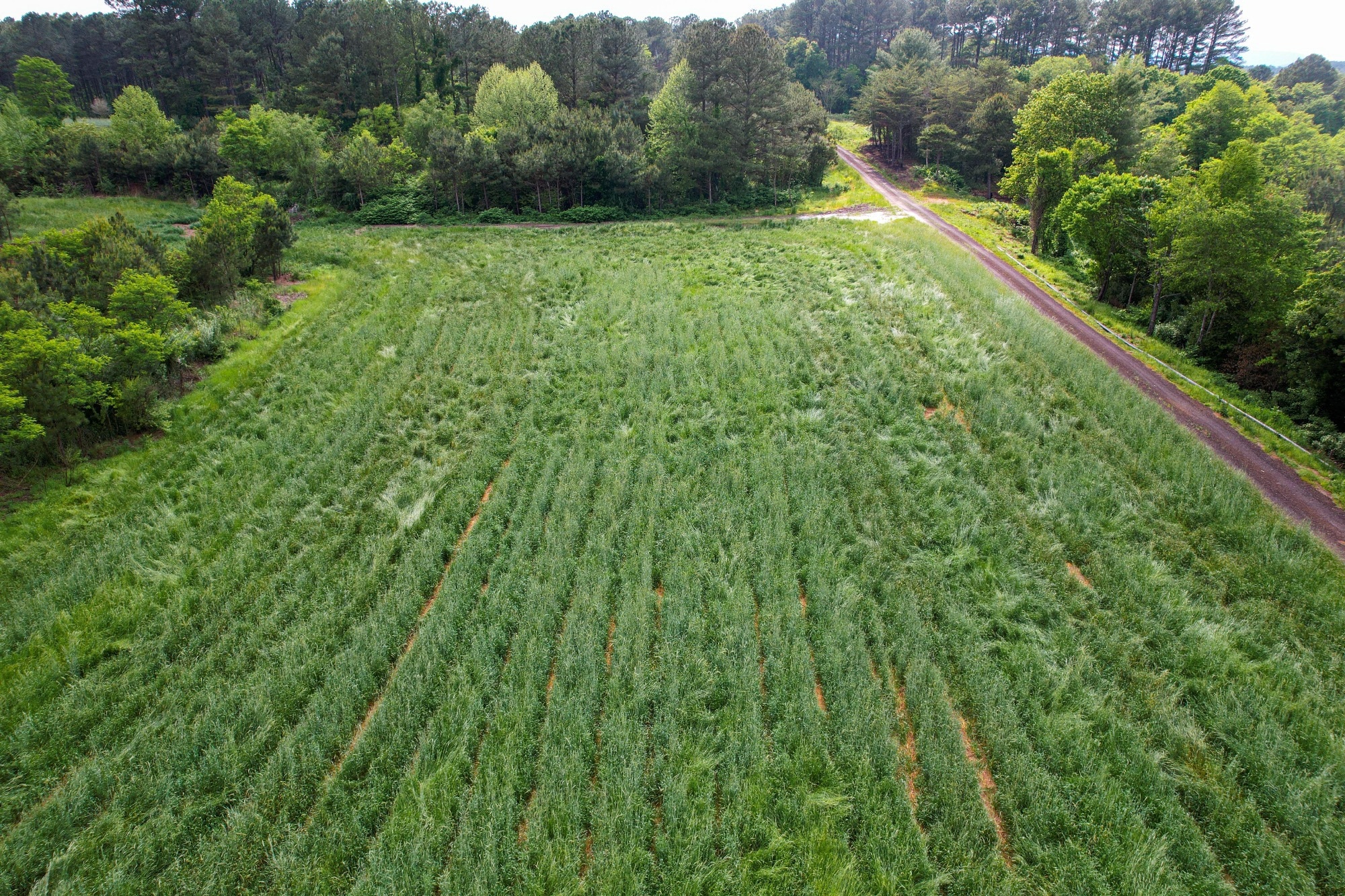
Reclamation with biosolids has turned many areas at the mine into lush pastures and forests. Image Credit: Denali
Did Denali experience any challenges during the mine reclamation? If so, how did you overcome them?
Each project comes with its challenges. At Copperhill, public perception and odor mitigation have been top concerns for the project.
The mine site is private property, but the community has strong ties to that land and has strong opinions about what goes on there. Keeping the public and community leaders informed about the project – while respecting the privacy of a private business– has been a challenge. As I mentioned, the community has expressed concerns about biosolids odor. We have put significant effort and expense into minimizing odor to address these concerns, like changing our sourcing and on-site processing.
We have implemented best management practices (such as wheel washes, restricted application areas, and seasonal restrictions) to reduce concerns about any potential off-site impacts. At each step, we listen to feedback from local communities and stakeholders and aim to build a record of success and quick response that we hope will continue to put community members at ease.
How does Denali measure the success of a mine reclamation project? What factors do you consider when determining its long-term ecological and economic viability?
When considering our reclamation efforts' success and long-term viability, we ask, could Denali walk away today and still have a lasting, positive impact? Denali is not looking for quick fixes at the Copperhill site – or any site – and all indications are that we have permanently improved the function of this watershed with the return of wildlife and revegetation and improvement in topsoil and water quality.
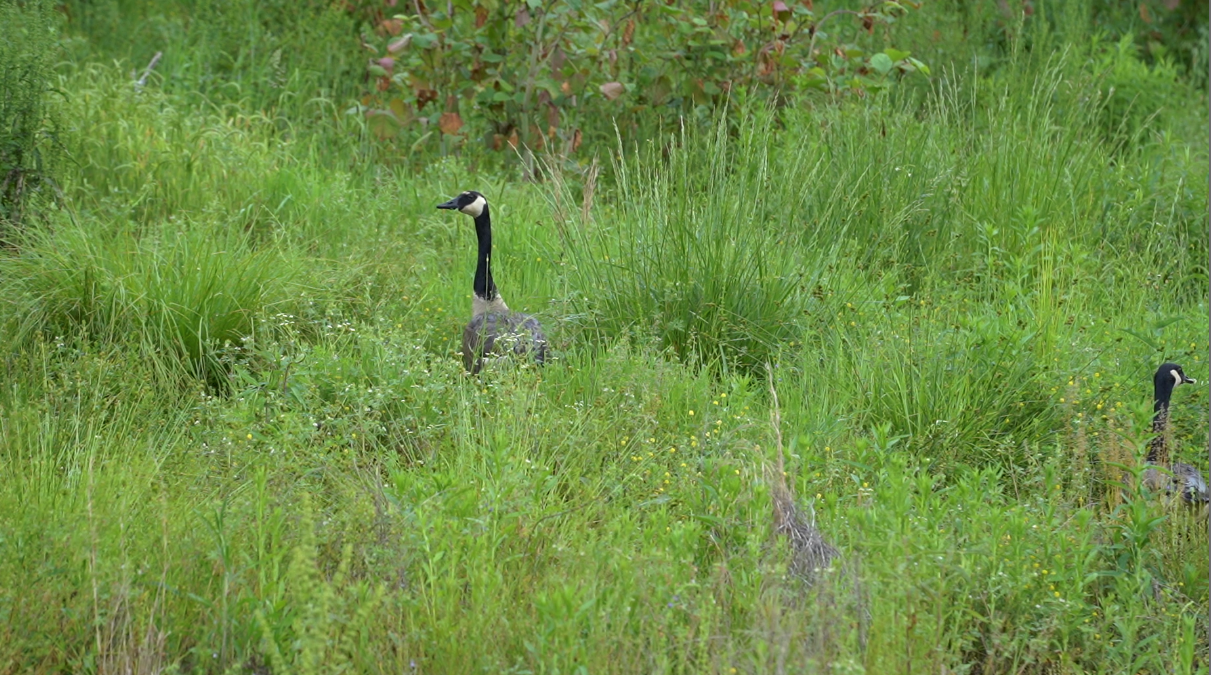
Geese graze in a portion of the Copperhill Mine reclaimed with biosolids. The application of biosolids has allowed vegetation to re-establish and buffered the pH of water so that trout are living in several ponds at the mine site. Image Credit: Denali
From an economic perspective, we see Denali competing with landfill tip fees. If municipalities can landfill their biosolids for less than our services cost, we are less likely to win contracts to manage biosolids and leverage them for ecological benefit. We aim to offer efficiency and sustainability that landfills cannot offer and show municipality partners the numerous and lasting environmental benefits biosolids offer to barren mine sites.
How did you involve local communities in the mine reclamation process? If so, how did you address their concerns?
Mine reclamation is a process that takes time, and it has been crucial to involve the local community, particularly because the Copperhill mine site is so vital to the community.
Denali and Copperhill Industries have offered site tours to local leaders, regulators, and media to showcase reclamation efforts and bring the community along in the journey.
Seeing our materials and processes up close and the progress made in the basin has been one of the most effective ways to directly address and discuss local community concerns and questions. We continue to find ways to connect with and listen to the community and continuously provide them with accurate project information.
As previously mentioned, we continue to refine and enhance our process to address community odor concerns, including sourcing, treatment with lime, application, and more.
How do you address potential long-term environmental risks associated with abandoned mines? What measures do you take to prevent future environmental degradation?
Many mine sites lack topsoil, so water infiltration can be minimal. In areas that have not been reclaimed, rain can flash through areas, carrying acidic, contaminated sediment into waterways that communities rely on for tourism, recreation, and more.
The vegetation and topsoil Denali has helped establish at the Copperhill site offer lasting protections against long-term environmental risks and subsequent community impacts. However, the Copperhill Industries property reclamation is ongoing, so our partnerships with the U.S. EPA and TDEC are critical. These agencies think about what comes after biosolids application. By working closely with the EPA and TDEC, we can ensure that what Denali does fits into the long-term trajectory of the site.
How do you approach rebuilding habitats and ecosystems affected by mining activities? Can you provide an example of a successful ecological restoration project in which Denali has been involved?
Each mine site is unique. We start by identifying the most critical issues – like lack of topsoil, acidic drainage, etc. This baseline assessment enables us to work closely with landowners to build a strategy to properly remediate the land and address critical site issues to deliver lasting results.
Since 2005, Denali has helped reclaim over 3,000 acres of mine land. Most reclaimed mine land has been at active and former coal mining sites in Pennsylvania and Alabama. Not unlike Copperhill, we have turned moonscapes into verdant pastures at these locations. About 1,500 of those acres in Pennsylvania are on public lands. Today, thanks to remediation efforts, we see people from neighboring communities using those lands for hunting, fishing, and outdoor family activities. It brings Denali great pride and desire to do more of this work to restore mine lands to ecological assets for communities nationwide.
What excites you the most about the future of mine reclamation?
What excites the Denali team and me most about mine reclamation is the abundance of opportunity to restore mine land into thriving ecosystems and ecological assets around the nation. There are numerous benefits to mine reclamation efforts for the environment and local communities.
The Appalachian Region has hundreds of thousands of acres of mine lands and millions of residents who generate an enormous amount of biosolids. At Denali, we believe we can point these problems at each other to benefit the environment, the economy, and local communities.
We see many opportunities for new reclamation projects with biosolids across the US, and Denali’s processes and expertise in this space improve daily.
Where can readers find more information?
Learn more about Denali and our mine reclamation projects at DenaliCorp.com.
About Jeff Retzke
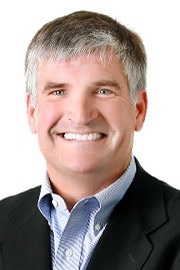 Jeff Retzke joined Denali in 2014 and serves as a Senior Director of Environmental Services. He is responsible for technical services, land permitting, and environmental reporting in the Southeast US.
Jeff Retzke joined Denali in 2014 and serves as a Senior Director of Environmental Services. He is responsible for technical services, land permitting, and environmental reporting in the Southeast US.
Jeff has worked in the wastewater industry since 2008. Before that, Jeff was a Senior Environmental Scientist with URS Corporation in Atlanta, Georgia.
Jeff has an MSc in Environmental Studies from the Medical University of South Carolina.
Disclaimer: The views expressed here are those of the interviewee and do not necessarily represent the views of AZoM.com Limited (T/A) AZoNetwork, the owner and operator of this website. This disclaimer forms part of the Terms and Conditions of use of this website.